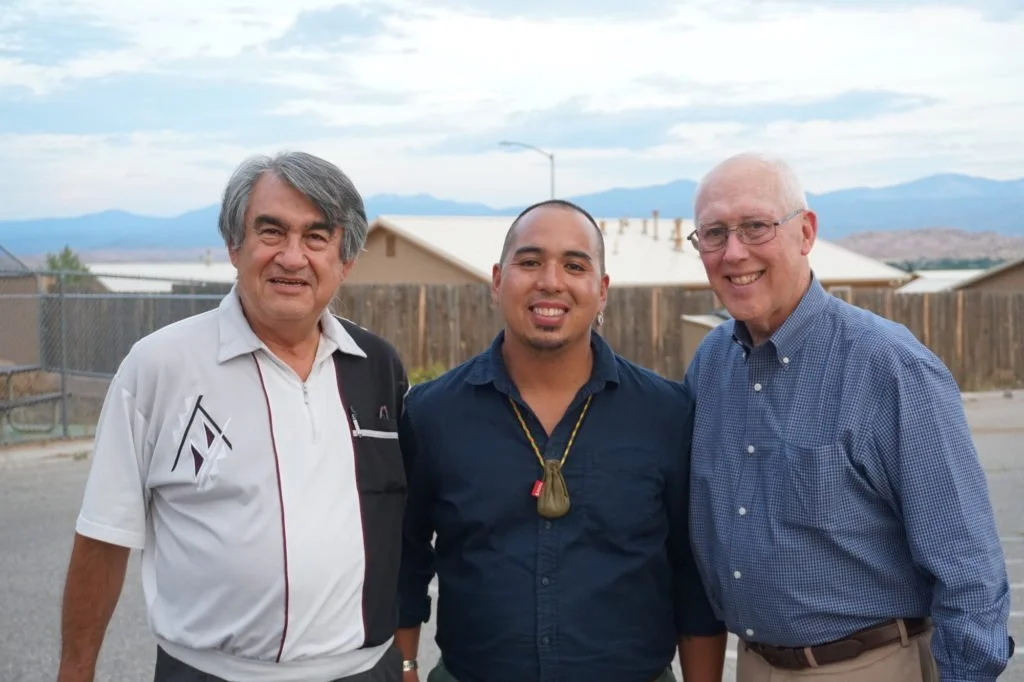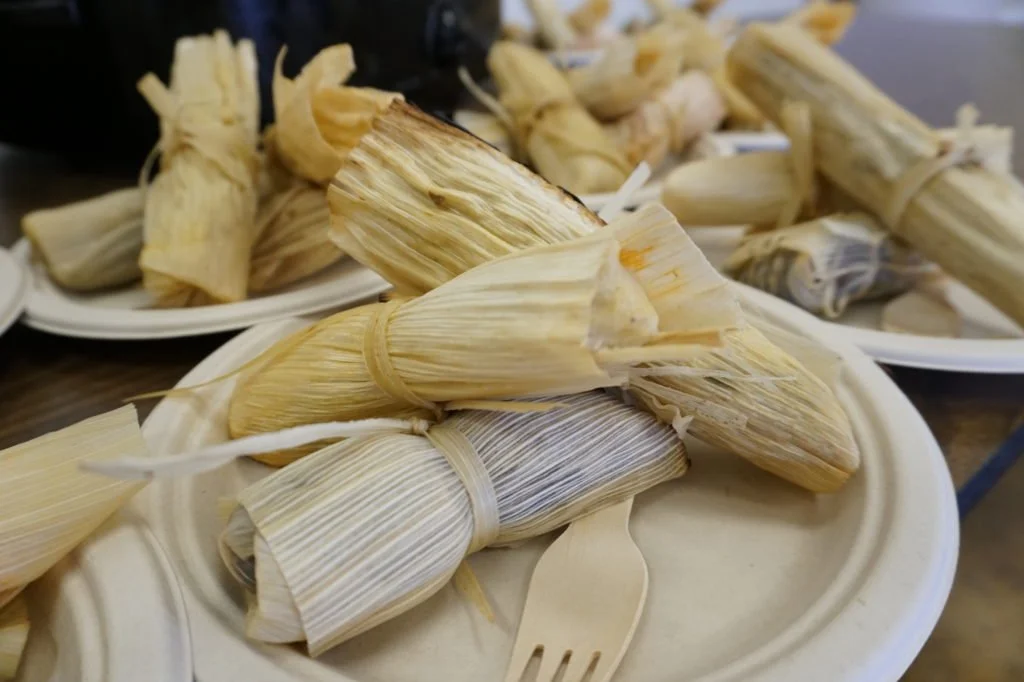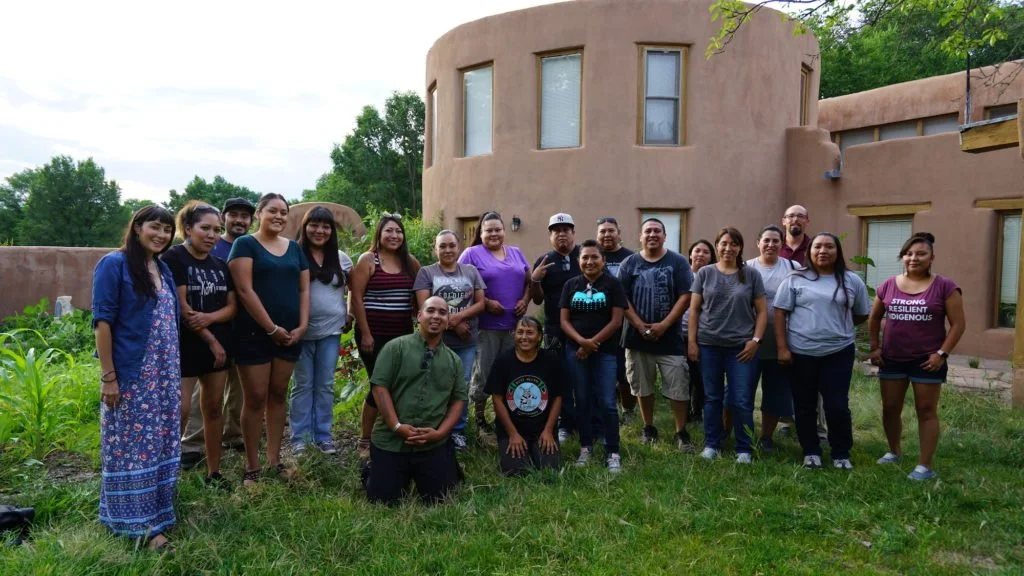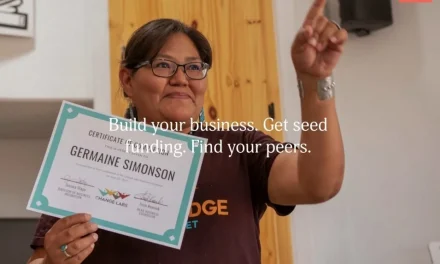 After the guest speaker presents, Foreman segues into how to apply that knowledge to one’s business or personal life, “and then we always end with a reflection. We have an elder guest speaker come in and say the last words,” Foreman said.One of Foreman’s first interactive audiences for his Financial Literacy and Business Basics course was the Santa Clara Pueblo. “We worked with the Santa Clara Housing Authority; and we also worked with programs that served families with children under the age of eight,” Foreman said.Peter Holter, managing director of entrepreneurial services at NMCC, explained: “In the case of Santa Clara, we’re seeing that there is a tremendous amount of skill based on pottery and traditional arts and crafts. They’re making huge inroads in international markets like Japan and China and other parts of Asia and Europe. It’s really sparking this idea of hope. We really want to change the culture of traditional economics and show that it’s okay to value your time and energy, and it’s okay to think about business plans. You can provide for yourself and also for others.”As an educator (at the Native American Community Academy in Albuquerque), Foreman has observed that among Native communities, there’s a lot of interest in not only creating a business but in giving back to the community. “People that I’ve talked to aren’t necessarily even interested in business or calling themselves ‘entrepreneurs,’ but everyone that I talked to wanted to increase their supplemental income. That’s really our focus,” he said.In short, Foreman explained: “Our goal is to increase our participant’s income and decrease their debt.”While Foreman identifies as an entrepreneur, he also approaches business through a social enterprise lens that incorporates the principles of turning a profit while giving back to the community. “I’m an educator and a planner, but my side hustle is creating t-shirts, bags and stickers for my business Karuna Colectiva, and teaching other young people about entrepreneurship skills,” Foreman explained.
After the guest speaker presents, Foreman segues into how to apply that knowledge to one’s business or personal life, “and then we always end with a reflection. We have an elder guest speaker come in and say the last words,” Foreman said.One of Foreman’s first interactive audiences for his Financial Literacy and Business Basics course was the Santa Clara Pueblo. “We worked with the Santa Clara Housing Authority; and we also worked with programs that served families with children under the age of eight,” Foreman said.Peter Holter, managing director of entrepreneurial services at NMCC, explained: “In the case of Santa Clara, we’re seeing that there is a tremendous amount of skill based on pottery and traditional arts and crafts. They’re making huge inroads in international markets like Japan and China and other parts of Asia and Europe. It’s really sparking this idea of hope. We really want to change the culture of traditional economics and show that it’s okay to value your time and energy, and it’s okay to think about business plans. You can provide for yourself and also for others.”As an educator (at the Native American Community Academy in Albuquerque), Foreman has observed that among Native communities, there’s a lot of interest in not only creating a business but in giving back to the community. “People that I’ve talked to aren’t necessarily even interested in business or calling themselves ‘entrepreneurs,’ but everyone that I talked to wanted to increase their supplemental income. That’s really our focus,” he said.In short, Foreman explained: “Our goal is to increase our participant’s income and decrease their debt.”While Foreman identifies as an entrepreneur, he also approaches business through a social enterprise lens that incorporates the principles of turning a profit while giving back to the community. “I’m an educator and a planner, but my side hustle is creating t-shirts, bags and stickers for my business Karuna Colectiva, and teaching other young people about entrepreneurship skills,” Foreman explained. Tech-Driven Approach Access to technology was a hinge point that made Foreman’s vision feasible.Foreman—who is skilled at graphic design, planning and project management—calls technology his “bread and butter.” As an educator, he observed that students across New Mexico are trained on Google Chromebooks—which happen to cost roughly $200, a steal for a laptop. “That, in my view, is really incredible, because it allows people to work collaboratively on a document, and you don’t have to buy any new software,” Foreman said.“The norm is to get workbooks and give them out to everyone,” Foreman said. But the norm wouldn’t cut it for his course. “We wanted to go with the Google Digital Suite, and it just so happened that Google put out a free curriculum called the Google Digital Skills Curriculum. It teaches you by video how to put together a budget, how to put together a business plan, how to put together a debt reduction calculator. I told Peter [Holter] that we have to include this in our program. After the program ends, our students will still have the computer and access to all of this information and knowledge for free,” Foreman said.Community-Based Approach About 8,000 Native-owned businesses operate in New Mexico. Five percent of those businesses have employees. The rest are sole proprietorship. NMCC courses offer a vital sense of interactivity, not to mention professional development. Google Chromebooks invite ongoing community interaction, allowing a community to build online in addition to locally, Holter said.Participants are not joining the Financial Literacy and Business Basics course, or any NMCC programs, passively, Holter underscored. There are actively engaged and committed to the process of personal evolution and business development. “There is a real heavy engagement,” he said. “The [Kellogg] grant calls for 16 families of a certain income and other requirements. At this last version of the cohort, there were over 30 people in the room, and they were engaged. They were using the tools that we gave them very effectively and sharing in ways that were pretty unique. What we’re looking to do is help people identify a community project where they can get together and put these tools to work. There’s an important community thing that happens after we leave. It’s a process.”
Tech-Driven Approach Access to technology was a hinge point that made Foreman’s vision feasible.Foreman—who is skilled at graphic design, planning and project management—calls technology his “bread and butter.” As an educator, he observed that students across New Mexico are trained on Google Chromebooks—which happen to cost roughly $200, a steal for a laptop. “That, in my view, is really incredible, because it allows people to work collaboratively on a document, and you don’t have to buy any new software,” Foreman said.“The norm is to get workbooks and give them out to everyone,” Foreman said. But the norm wouldn’t cut it for his course. “We wanted to go with the Google Digital Suite, and it just so happened that Google put out a free curriculum called the Google Digital Skills Curriculum. It teaches you by video how to put together a budget, how to put together a business plan, how to put together a debt reduction calculator. I told Peter [Holter] that we have to include this in our program. After the program ends, our students will still have the computer and access to all of this information and knowledge for free,” Foreman said.Community-Based Approach About 8,000 Native-owned businesses operate in New Mexico. Five percent of those businesses have employees. The rest are sole proprietorship. NMCC courses offer a vital sense of interactivity, not to mention professional development. Google Chromebooks invite ongoing community interaction, allowing a community to build online in addition to locally, Holter said.Participants are not joining the Financial Literacy and Business Basics course, or any NMCC programs, passively, Holter underscored. There are actively engaged and committed to the process of personal evolution and business development. “There is a real heavy engagement,” he said. “The [Kellogg] grant calls for 16 families of a certain income and other requirements. At this last version of the cohort, there were over 30 people in the room, and they were engaged. They were using the tools that we gave them very effectively and sharing in ways that were pretty unique. What we’re looking to do is help people identify a community project where they can get together and put these tools to work. There’s an important community thing that happens after we leave. It’s a process.”
NMCC is currently weighing how to measure its true impact and value. “What we’ve noticed in Financial Literacy and Business Basics is that we’re starting to trigger more indigenous tribal economies,” Holter said. “We’re seeing bartering happen within our class. We’re looking at new ways to create these economies that may not just be based on cash or transactions but based on relationships and the building of these local tribal economies.”
Inspired by the collaborative nature cultivated through NMCC programs and courses, Native entrepreneurs “feed each other in all kinds of ways. It’s great to see how this thing is emerging,” Holter said. “People are coming together and realizing that they are not alone, and that they have a dream, and the dream can be fulfilled.”









